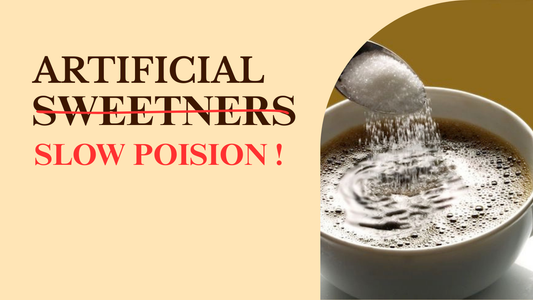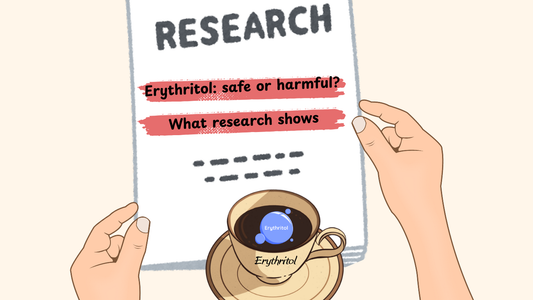Why this matters
India is the diabetes capital of the world - 100 million people already live with it, and millions more are prediabetic. Sugar is the biggest dietary culprit, but most “natural” alternatives (honey, jaggery, brown sugar) still spike blood glucose.
👉 That’s why monk fruit is different - and why scientists have studied how it affects people with diabetes.
The science in plain words
-
Monk fruit’s sweetness comes from mogrosides, not sugar.
-
Glycemic index ≈ 0 → it does not raise blood glucose or insulin.
-
Clinical trials confirm: monk fruit behaves more like water than sugar in the body.
Key human studies
1. The “crossover trial” (Tey et al., 2017)
-
30 healthy men consumed drinks sweetened with sucrose, aspartame, stevia, or monk fruit.
-
Blood glucose and insulin were measured after each drink.
-
Result:
-
Sucrose caused sharp spikes.
-
Monk fruit (like stevia/aspartame) produced no spike, almost identical to water.
👉 Clear evidence: monk fruit does not raise blood sugar in humans.
2. The 2025 systematic review of RCTs
-
Reviewed all available randomized trials on monk fruit extract.
-
Found monk fruit reduced glucose and insulin exposure compared to sugar.
-
Authors: “Promising evidence for blood-sugar management, but long-term diabetes trials are needed.”
👉 Translation: Using monk fruit instead of sugar reduces the body’s glycemic load.
3. FDA GRAS evaluations
-
Monk fruit extract and juice concentrate are covered by multiple GRAS (“Generally Recognized As Safe”) approvals.
-
FDA-reviewed human data showed no glycemic effects at normal intake levels.
👉 Monk fruit is considered safe for daily use - including for people with diabetes.
What animal studies add
Rodent studies show mogroside V (the main compound in monk fruit):
-
Improves insulin sensitivity.
-
Reduces fat build-up in the liver.
-
Lowers inflammation linked to diabetes.
⚠️ Note: promising, but still preclinical. Human trials are the gold standard.
What we don’t know (yet)
-
Few long-term studies in people with type 2 diabetes.
-
We still need 12–24 week trials measuring HbA1c (average blood sugar).
-
More research is needed on monk fruit’s effects on the gut microbiome and cravings.
👉 But the evidence so far is strongly in favor of monk fruit as a safe replacement for sugar.
Practical guidance for diabetics
✅ Monk fruit can sweeten chai, coffee, curd, or desserts without blood sugar spikes.
✅ Works best when used to replace sugar, not as an “extra” sweetener.
✅ Choose clean blends (monk fruit + erythritol) with no maltodextrin or hidden sugars.
✅ Pair it with a balanced diet - monk fruit helps, but it’s not a license for more carbs.
FAQs
Does monk fruit raise blood sugar?
No. Clinical studies show monk-fruit-sweetened drinks do not raise glucose or insulin, unlike sugar.
Is it safe for daily use?
Yes. FDA has approved monk fruit as GRAS. Human studies report no glycemic impact at typical intake levels.
Is it better than jaggery or honey for diabetics?
Absolutely. Jaggery and honey are still sugar. Monk fruit is not.
Will it help with weight loss?
It removes sugar calories from your diet. That helps indirectly - but overall diet still matters.
Conclusion
Monk fruit is one of the few natural sweeteners backed by real science:
-
Zero glycemic index.
-
No effect on blood glucose or insulin in human trials.
-
Safe for diabetics and daily use, confirmed by FDA GRAS reviews.
👉 While more long-term diabetes-specific studies are needed, the clinical evidence so far makes one thing clear: replacing sugar with monk fruit is a smart move for anyone watching their blood sugar.
At EPRA Farms, we’re proud to bring India this clean, science-backed sweetness.





